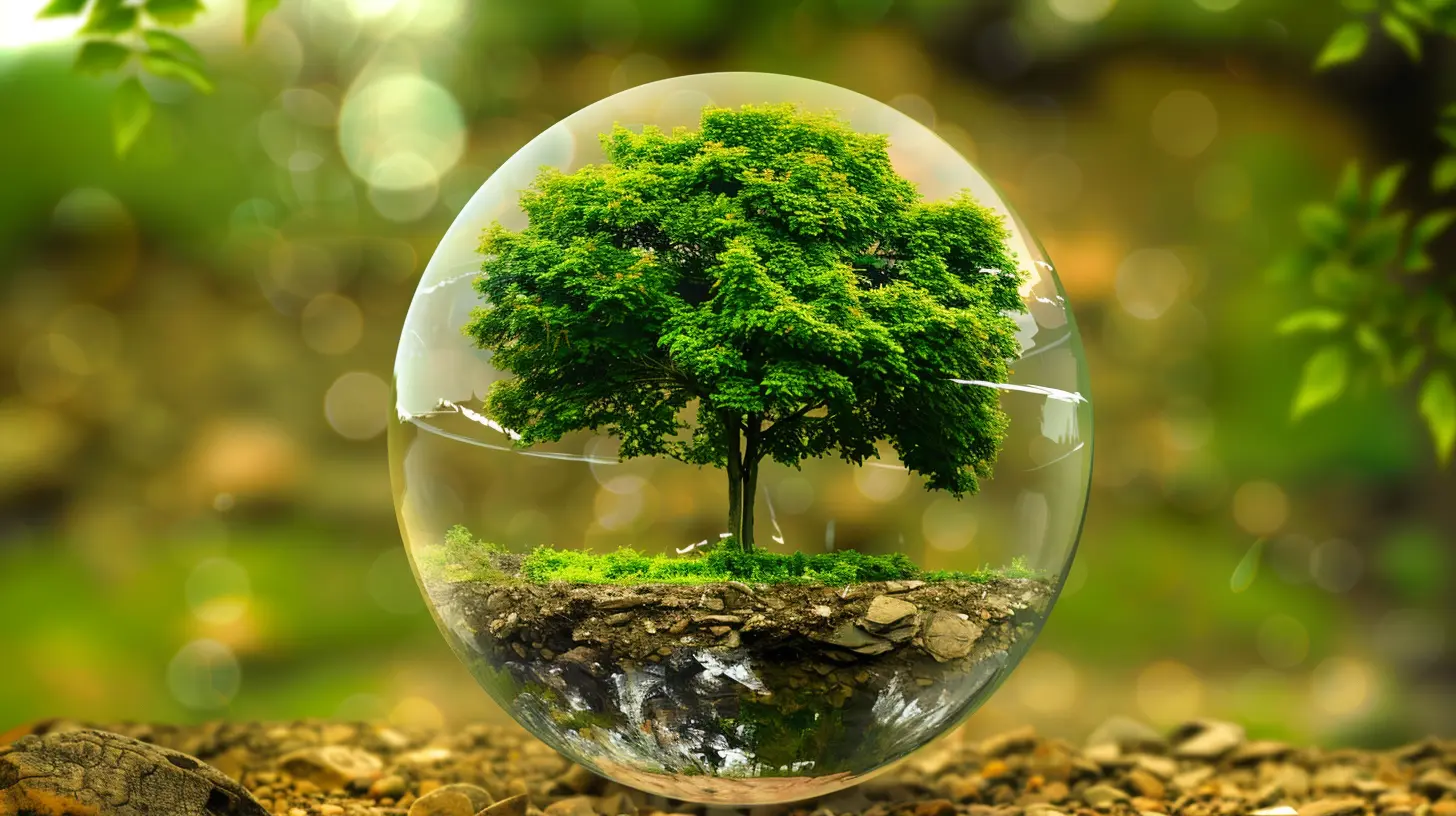Sustainability at Tech Events: Innovations That Matter
10 July 2025
In recent years, sustainability has become more than just a buzzword—it's a necessity. From corporations to individuals, the demand for eco-friendly practices is growing, and the tech industry is no exception. The spotlight isn't just on the gadgets themselves but also on the events that showcase them. Tech events, from grand expos to intimate product launches, are massive in scale and can have a significant environmental impact. But here's the good news: things are changing, and fast. Many tech events are now embracing sustainability, aiming to reduce their carbon footprint while still delivering the wow factor.
So, how exactly is sustainability playing a role at tech events? What innovations are making a difference? Let’s dive deep into the green revolution taking over the tech event world and why it matters now more than ever.

Why Tech Events Matter in the Sustainability Conversation
Tech events are enormous. Think about the Consumer Electronics Show (CES) or Mobile World Congress (MWC). These events attract thousands of attendees, exhibitors, and media professionals from all over the world. With such scale comes a considerable environmental impact—carbon emissions from travel, electricity consumption, plastic waste, and food waste, just to name a few. The sheer volume of energy and resources required to run these events is staggering.But here's the thing: tech events are also platforms for innovation. They can set trends, push boundaries, and lead by example. If tech events can demonstrate sustainable practices, they can inspire the entire industry and beyond to follow suit.
The Environmental Impact of Tech Events
Before we dive into the innovations, let’s take a quick look at why tech events traditionally haven’t been the most eco-friendly gatherings.- Travel: Thousands of people flying in from around the world means a massive carbon footprint.
- Energy Consumption: Huge venues require extensive lighting, air conditioning, and electronic displays.
- Waste: From single-use plastics to discarded promotional materials, the waste generated is often staggering.
- Food and Beverage: Catering for thousands often leads to significant food waste and packaging waste.
But here's the kicker—there’s a growing awareness of these issues, and the tech industry is rising to the challenge.

Key Innovations Driving Sustainability at Tech Events
1. Virtual and Hybrid Events: Reducing Travel Carbon Footprint
One of the most immediate and impactful innovations we've seen in recent years, especially accelerated by the COVID-19 pandemic, is the rise of virtual and hybrid events. Before the pandemic, the idea of attending a major tech event from the comfort of your home may have seemed unappealing. But as companies were forced to pivot, the tech world realized that virtual events aren't just possible—they can be highly effective.- Virtual Events: Entire conferences are now hosted online, eliminating the need for attendees to travel. This drastically reduces the carbon footprint while still allowing for networking, presentations, and discussions.
- Hybrid Events: A mix of in-person and online participation. This not only cuts down on travel but also makes events more accessible to a global audience. You can still have the live event experience while limiting the number of people physically present.
These formats also enable organizers to use cutting-edge platforms, integrating augmented reality (AR) and virtual reality (VR) experiences to make remote attendance more engaging. Plus, fewer people flying means fewer emissions—a win-win for everyone.
2. Sustainable Event Venues
The choice of venue can make or break a tech event’s sustainability efforts. Many venues are now designed with eco-friendly practices in mind. Tech event organizers are increasingly opting for venues that offer:- Energy-efficient lighting and HVAC systems: LED lighting, motion sensors, and energy-efficient air conditioning systems are becoming standard in modern venues.
- Solar or renewable energy sources: Some venues are powered by solar panels or wind turbines, significantly reducing their carbon footprint.
- Water conservation systems: From low-flow toilets to rainwater harvesting, water-saving measures are becoming more prevalent.
- Green certifications: Venues that are LEED-certified (Leadership in Energy and Environmental Design) are often the top choices for eco-conscious event organizers.
One standout example is the Fira Barcelona Gran Via, a venue in Spain that hosts the Mobile World Congress. This venue boasts solar panels that generate a large portion of its energy and has comprehensive waste management systems.
3. Eco-Friendly Booth Designs
Exhibitors are also getting in on the sustainability action. Traditional event booths often use materials that are single-use, non-recyclable, or energy-intensive to produce. But now, companies are opting for more sustainable options, including:- Recyclable materials: Cardboard, bamboo, and other sustainable materials are being used to create booths that can be reused or recycled after the event.
- Modular booth designs: Modular designs allow for easy reconfiguration and reuse at multiple events, reducing waste.
- Digital displays: Instead of printed banners and brochures, more exhibitors are using digital displays and QR codes to share information, cutting down on paper waste.
4. Paperless Registration and Communication
Gone are the days of paper tickets and printed brochures. Many tech events have gone entirely paperless, offering digital alternatives for almost every aspect of the event:- E-tickets and QR codes for event entry.
- Event apps that provide schedules, maps, and exhibitor information.
- Digital networking tools that allow attendees to connect without the need for business cards.
Not only does this reduce paper waste, but it also makes the event experience smoother and more efficient. Plus, it’s one less thing to carry around—who doesn’t love that?
5. Sustainable Catering
Food waste is a significant issue at large events. However, many tech events are now partnering with local and sustainable catering companies to minimize their environmental impact. Here’s how:- Locally sourced ingredients: By sourcing food locally, events reduce the carbon footprint associated with transportation.
- Plant-based menus: Offering more plant-based options not only caters to a growing number of vegetarians and vegans but also significantly reduces the environmental impact compared to meat-heavy menus.
- Compostable packaging: Instead of plastic utensils and plates, many events are now using compostable or biodegradable alternatives.
Some events also donate leftover food to local charities, ensuring that nothing goes to waste.
6. Carbon Offsetting Initiatives
While reducing emissions is the primary goal, some emissions are inevitable. That’s where carbon offsetting comes into play. Many tech events are now partnering with carbon offset programs to neutralize their environmental impact.- Tree planting programs: For every attendee, some events pledge to plant a tree, helping to absorb the carbon produced by travel and energy use.
- Renewable energy investments: Others may invest in renewable energy projects, such as wind or solar farms, to offset their carbon footprint.
These initiatives allow tech events to go the extra mile in their sustainability efforts, showing that they’re committed to making a real difference.
7. Waste Management and Recycling Programs
Waste management is one of the most visible sustainability challenges at tech events. However, many organizers are now implementing comprehensive strategies to minimize waste:- Recycling stations: Strategically placed recycling bins make it easy for attendees to dispose of waste responsibly.
- Zero-waste goals: Some events have ambitious zero-waste goals, meaning that almost all waste is either recycled, composted, or reused.
- Reusable badges and lanyards: Instead of single-use plastic badges, many events now offer reusable badges or encourage attendees to return their lanyards at the end of the event.
These initiatives not only help reduce the environmental impact but also raise awareness among attendees, encouraging them to adopt more sustainable practices in their personal and professional lives.

The Future of Sustainability at Tech Events
The future of tech events is undeniably green. As technology continues to advance, we can expect even more innovative solutions to reduce the environmental impact of these gatherings. From AI-driven energy management systems to blockchain-based carbon tracking, the possibilities are endless.Moreover, sustainability is becoming a priority not just for event organizers but also for attendees. More and more people are choosing to attend events that prioritize eco-friendly practices, and companies that fail to adopt sustainable measures may find themselves left behind.

Conclusion: Why It Matters
Sustainability at tech events isn’t just a trend—it’s a necessity. As the world grapples with climate change, every industry needs to do its part, and tech events are no exception. By embracing innovations like virtual events, sustainable venues, eco-friendly booths, and waste management programs, the tech industry is leading the charge towards a greener future.And here’s the thing: it's not just about saving the planet (though that’s a pretty big deal). It’s also about setting an example. If the tech world, which thrives on innovation, can make sustainability a priority, other industries will follow suit.
So next time you attend a tech event, take a moment to appreciate the efforts behind the scenes. The future is green, and we’re all part of it.
all images in this post were generated using AI tools
Category:
Tech EventsAuthor:

Pierre McCord
Discussion
rate this article
2 comments
Miriam Rogers
Sustainability in tech events is not just an ideal; it's a responsibility we all share. By embracing innovative practices, we can reduce our environmental footprint while fostering meaningful connections. Let's prioritize eco-friendly solutions and inspire a culture of sustainability, ensuring that our technological advancements benefit both people and the planet.
November 11, 2025 at 5:59 PM

Pierre McCord
Absolutely! Embracing sustainability in tech events is essential for creating a positive impact. Let’s commit to eco-friendly practices that benefit both our industry and the planet.
Giovanna McVaney
Exciting innovations for a greener future!
July 19, 2025 at 3:21 AM

Pierre McCord
Thank you! We're thrilled to showcase how technology is paving the way for a more sustainable future.


